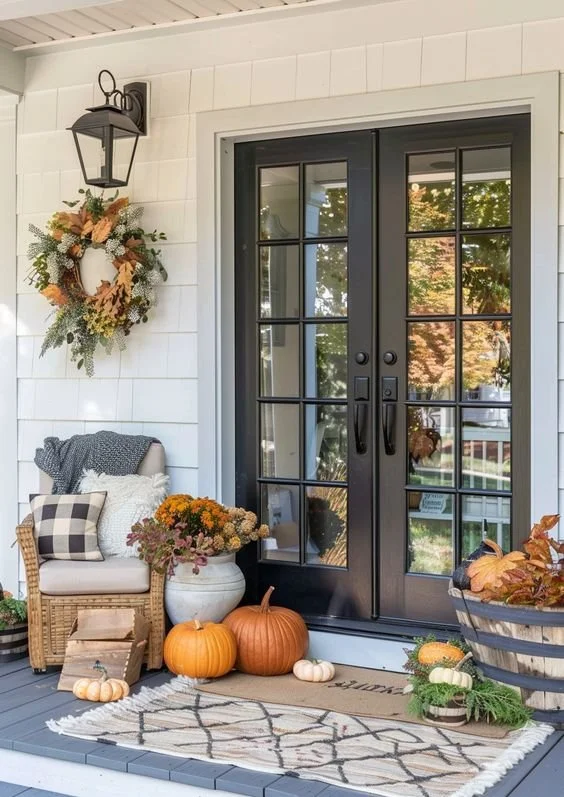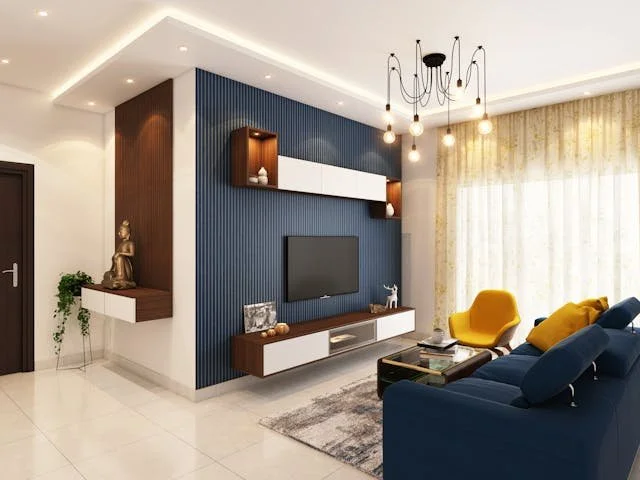Transform Your Front Porch with Fall Décor
RH Business Marketing Solutions
As the air cools and leaves begin to turn, it’s time to embrace the cozy, inviting spirit of fall by transforming your front porch into a warm, welcoming space. Fall décor isn’t just about pumpkins and hay bales—it’s an opportunity to express your love for the season through creativity, color, and texture. Whether your style is rustic, modern, or somewhere in between, these ideas will help you create a front porch that radiates autumn charm.
1. Start with a Warm Welcome: Fall Wreaths
Your front door is the focal point of your porch, so start with a wreath that captures the essence of the season. Opt for a wreath made from natural elements like dried leaves, berries, pinecones, and miniature pumpkins. If you prefer a more modern look, consider a wreath made of metal or fabric in rich autumnal colors like deep red, burnt orange, and gold. Adding a monogram or a seasonal message, such as “Welcome Fall,” can personalize your wreath even further.
2. Layer Textures with Outdoor Rugs and Doormats
Adding an outdoor rug or a seasonal doormat is an easy way to introduce color and texture to your porch. Look for rugs in earthy tones or patterns inspired by fall foliage. Layering a smaller, seasonal doormat over a larger rug can create depth and interest, making the entryway even more inviting.
3. Incorporate Natural Elements: Pumpkins, Gourds, and Mums
Nothing says fall quite like pumpkins and gourds. Mix and match different sizes, shapes, and colors to create a visually appealing display on your steps or around your door. Complement these with potted mums in vibrant shades of yellow, orange, and burgundy. For added interest, incorporate other natural elements like hay bales, cornstalks, and dried wheat bundles. These rustic touches add height and dimension to your display.
4. Light Up the Season: Lanterns and String Lights
As the days grow shorter, lighting becomes an essential part of your porch décor. Lanterns filled with candles or battery-operated LED lights add a soft, warm glow. Place them on the steps, along the walkway, or hang them from hooks near the door. String lights are another great option, especially when draped around railings or woven through garlands of leaves or pinecones. These lights will create a magical ambiance, especially during crisp fall evenings.
5. Cozy Up with Seasonal Seating
If you have space, adding a seating area to your front porch can make it a perfect spot to enjoy a cup of coffee on a cool morning. Opt for outdoor furniture that can withstand the elements, and dress it up with cushions and blankets in fall colors. Plaid patterns and rich fabrics like flannel or wool add warmth and comfort. Even a simple bench with a few decorative pillows can make a big impact.
6. Add Personal Touches: DIY and Vintage Finds
Personalize your fall porch décor with DIY projects and vintage finds. Consider crafting your own wooden signs with seasonal phrases like “Harvest Time” or “Autumn Blessings.” Vintage crates, baskets, and old-fashioned watering cans can be repurposed as planters or decorative accents. These unique touches will give your porch character and charm.
7. Don’t Forget the Final Details
Small details can make a big difference. Consider adding a fall-themed mailbox cover, a festive door knocker, or a seasonal flag. A basket filled with pinecones, acorns, and dried leaves can serve as a simple yet effective decoration by the door. These final touches will pull the entire look together and ensure your porch is autumn-ready.
Conclusion
Decorating your front porch for fall is a wonderful way to celebrate the season and make your home feel warm and inviting. Whether you go all out with elaborate displays or keep it simple with a few key pieces, the goal is to create a space that reflects the beauty and coziness of autumn. With these ideas in mind, you’re ready to turn your porch into a stunning seasonal showcase that welcomes guests and celebrates the splendor of fall.

















